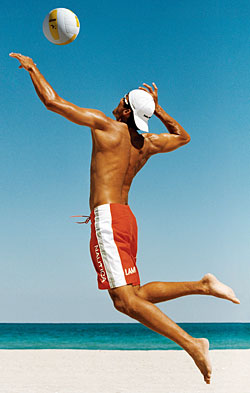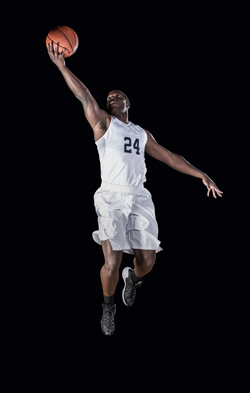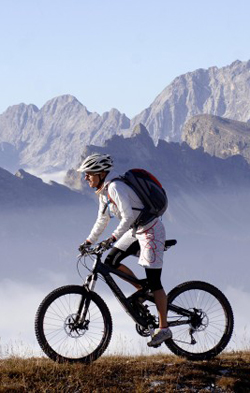
VOLLEYBALL
Common Issues:
Neck & Shoulder pain from shrugging technique. Arching of lower back and sprinting lateral movement which tightens the hip flexors and misaligns knees. One-sided repetative twisting unevenly develops the back muscles.
Pilates Benefits:
Balance shoulder-supporting back muscles while opening the chest. Work your center back into balance. Teach to to be lighter on your feet to improve quickness and defensive abilities.

RUNNING
Common Issues:
Running on a hard or uneven surfaces impacts the lower back and knees. Continuous repetative movement with compacting pressure tightens the the hip flexors, the calves, shins, ankle joints and shortens the achilles. The whole body tightens from compression.
Pilates Benefits:
Pilates' lengthening approach returns the core muscles back into a lifting tendency to decompress the spine and alleviate joint pressure. Decrease racing time & increase distance by running lighter. The principle of "Breath" supports blood circulation to keep your muscles moving with less fatigue.

BASKETBALL
Common Issues:
Sudden sprinting & stopping movements with low hovering and open stance with bursting jumps impacts the lower body: legs, knee alignment, shins, tightens calves and strains the lower back.
Pilates Benefits:
Pilates' principles of "Concentration," "Precision," and "Control" will increase your coordination. "Centering" will stabilize your core/center-of-gravity and allow for quick changes to direction, horizontally and vertically. "Flow" will make you more agile and quicker on the court.

CYCLING
Common Issues:
Increased neck tension from hunching over while looking up for a lengthened amount of time in a stagnant torso position. Tightened hip flexors, quads & hamstrings increase from the cycling movement in a crouched position
Pilates Benefits:
Realign and elongate your neck/spine through "Centering." Lengthen and open your hip flexors through various planes of movement.